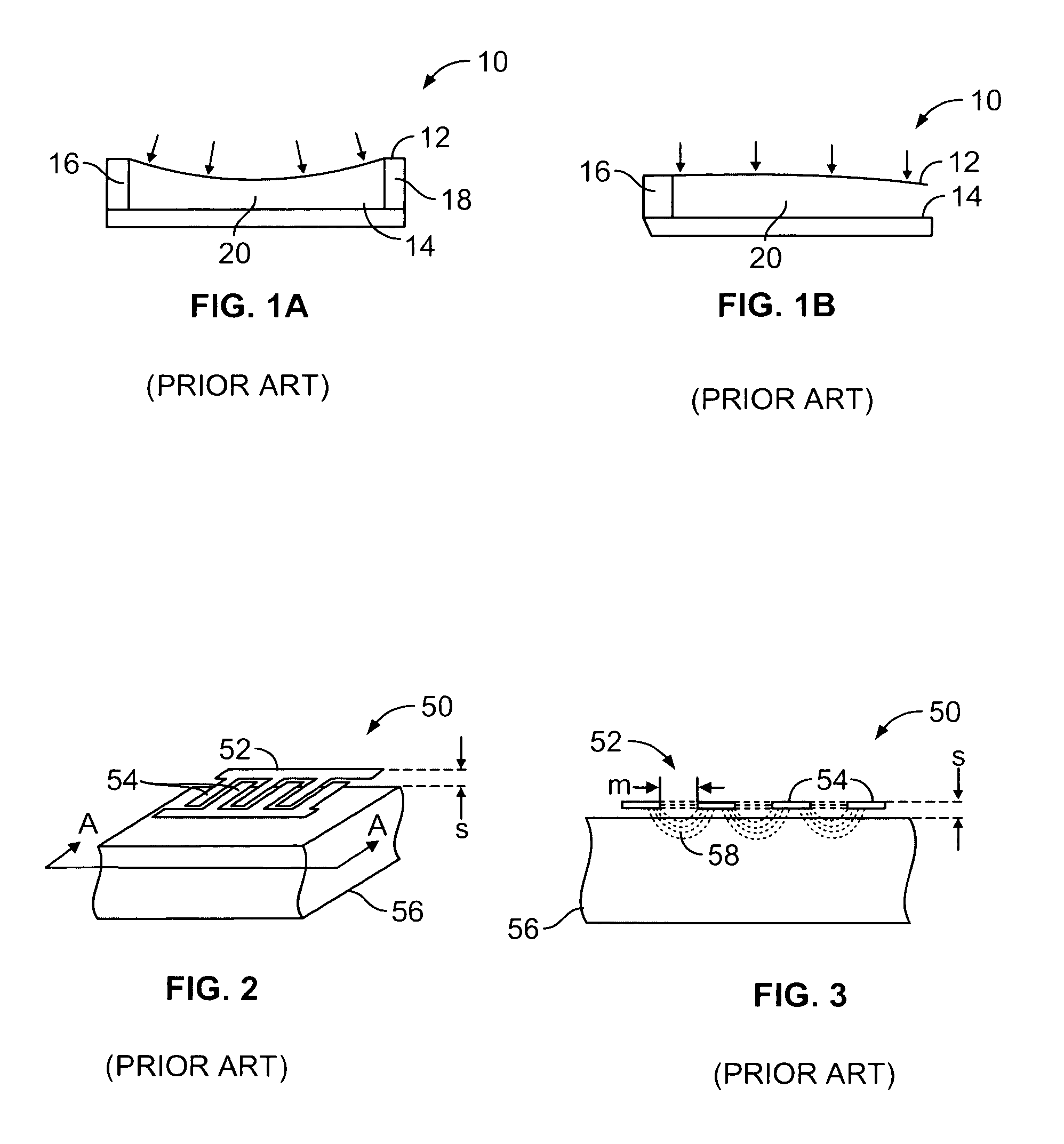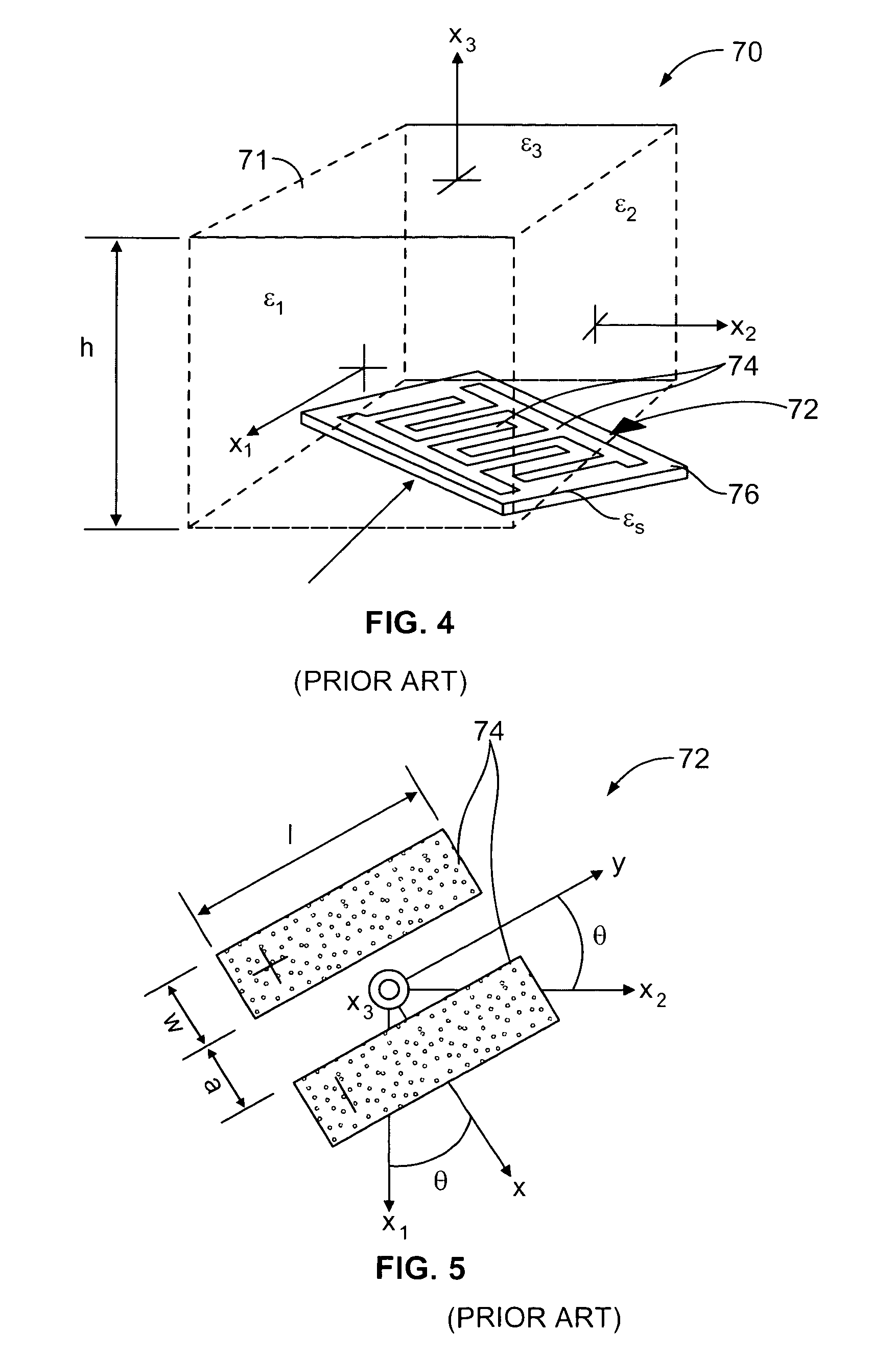Dielectrostrictive sensor for measuring deformation
a sensor and dielectrostrictive technology, applied in the field of solid-state sensors, can solve the problems of inability to fully realize the effect of a single sensor, inability to fully realize the effect of a single measurement, and relatively complex measurement equipmen
- Summary
- Abstract
- Description
- Claims
- Application Information
AI Technical Summary
Benefits of technology
Problems solved by technology
Method used
Image
Examples
Embodiment Construction
[0053]The present invention is directed to a sensor responsive to the dielectric response of any liquid or solid dielectric material changes with applied stress or strain. Deformation-induced change of dielectric properties can be monitored using a dielectrostriction sensor which is essentially a capacitor having a low energy consumption and no heat dissipation. Dielectrostriction sensing provides ready manufacturing and implementation not typical for traditional capacitor sensing techniques.
[0054]The preferred embodiments utilize a planar capacitor design of the dielectrostriction sensor. Turning initially to FIGS. 2 and 3, one such sensor 50 consists of a series of interdigitated electrodes 54, preferably deposited on a rigid substrate (see FIG. 2). The capacitance variation occurs due to changing dielectric properties of the material rather than mechanical displacements of the electrodes such that the sensor does not require mechanical contact with a monitored part 54 having diel...
PUM
| Property | Measurement | Unit |
|---|---|---|
| thickness | aaaaa | aaaaa |
| thickness | aaaaa | aaaaa |
| thickness | aaaaa | aaaaa |
Abstract
Description
Claims
Application Information
 Login to View More
Login to View More - R&D
- Intellectual Property
- Life Sciences
- Materials
- Tech Scout
- Unparalleled Data Quality
- Higher Quality Content
- 60% Fewer Hallucinations
Browse by: Latest US Patents, China's latest patents, Technical Efficacy Thesaurus, Application Domain, Technology Topic, Popular Technical Reports.
© 2025 PatSnap. All rights reserved.Legal|Privacy policy|Modern Slavery Act Transparency Statement|Sitemap|About US| Contact US: help@patsnap.com



